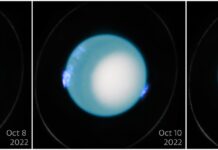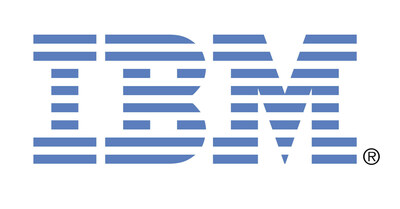Samsung’s Quantum Dot Technology: A Paradigm Shift in Display Innovation
Samsung Electronics has been at the forefront of display technology advancements, particularly through the pioneering use of quantum dots. Quantum dots are nanometer-sized semiconductor particles that possess unique optical properties, allowing them to emit light in specific colors depending on their size. Over the past decade, these materials have revolutionized color accuracy and reproduction in display technology. In 2015, Samsung made a significant leap forward by introducing SUHD TVs, marking the first instance of commercializing quantum dots without using cadmium, a traditionally essential yet hazardous component in their synthesis.
The academic community has acknowledged Samsung’s initiative, noting that the commercialization of cadmium-free quantum dot televisions steered new research directions and contributed to the awarding of the 2023 Nobel Prize in Chemistry for the discovery and synthesis of quantum dots.
The Significance of Cadmium in Quantum Dot Research
Quantum dots garnered scientific attention in the 1980s when Aleksey Yekimov and Louis E. Brus published their findings on the quantum confinement effect and size-dependent optical properties of these particles. The research momentum increased significantly in 1993 when Moungi Bawendi developed a reliable method for synthesizing quantum dots. Meanwhile, Taeghwan Hyeon of Seoul National University invented the "heat-up process" in 2001, a technique that allowed for the production of uniform nanoparticles, facilitating further advancements in the field.
Despite these advances, quantum dots’ reliance on cadmium, a material designated as hazardous by the European Union’s Restriction of Hazardous Substances (RoHS) Directive, posed significant challenges to their commercialization. Cadmium selenide (CdSe) was commonly used because it readily forms stable semiconductors through strong ionic bonds with elements like selenium and sulfur. These semiconductors, known as II-VI semiconductors, were the standard for producing high-quality nanocrystals at low temperatures. However, due to cadmium’s toxicity, alternative materials like indium phosphide (InP) were explored, albeit with challenges due to the complex nature of forming covalent bonds, which are less stable than ionic bonds.
Samsung’s No-Compromise Approach to Consumer Safety
Samsung’s journey with quantum dot technology began in 2001, with a clear focus on eliminating cadmium due to its health risks. As Sanghyun Sohn, Head of the Advanced Display Lab at Samsung Electronics, explained, the company adopted a zero-cadmium policy from the start. This commitment to safety and innovation led to the development of the world’s first cadmium-free quantum dot material in 2014.
Samsung’s breakthrough involved introducing a triple-layer protective coating technology that shields indium phosphide nanoparticles from environmental factors like oxygen and light, ensuring durability and image quality. In 2015, Samsung launched the world’s first commercial SUHD TV featuring these no-cadmium quantum dots, marking a paradigm shift in the display industry.
The path to commercialization was not without its challenges. Indium phosphide quantum dots initially achieved only about 80% of the performance of their cadmium-based counterparts. However, through intensive research and development efforts at the Samsung Advanced Institute of Technology (SAIT), Samsung achieved 100% performance equivalence, ensuring ten years of reliable operation.
The Components of Samsung’s Quantum Dots
Samsung’s QLED displays incorporate three critical components: a core where light is emitted, a shell that protects and stabilizes the core, and a ligand, a polymer coating that enhances oxidation stability. The seamless integration of these components is vital to the technology’s success, involving an advanced industrial process from material acquisition and synthesis to mass production.
Setting a New Standard in Display Technology
Samsung’s quantum dot technology has set a new benchmark for premium displays. Building on years of foundational research, the company introduced QLED TVs in 2017, further advancing display innovation with the launch of QD-OLED TVs in 2022. This next-generation technology integrates quantum dots into an OLED structure, providing faster response times, deeper blacks, and higher contrast ratios.
Samsung’s QD-OLED technology earned the Display of the Year award in 2023 from the Society for Information Display (SID), underscoring its leadership in display technology innovation.
The Future of Quantum Dot Displays
Looking ahead, Samsung is exploring self-emissive quantum dots, aiming to develop materials that emit light independently through electroluminescence. This innovation could revolutionize virtual and augmented reality applications by enabling higher resolution, efficiency, and brightness.
As a leader in quantum dot display technology, Samsung continues to push boundaries, aiming to deliver experiences indistinguishable from reality. With its bold vision and commitment to safety and innovation, Samsung is shaping the future of displays and expanding the possibilities of quantum dot technology.
For more information on Samsung’s advancements in quantum dot technology, visit Samsung Newsroom.
- An ionic bond is a chemical bond formed when electrons are transferred between atoms, creating ions held together by electrical attraction.
- A covalent bond is a chemical bond in which two atoms share electrons.
For more Information, Refer to this article.




























![samsung tvs and displays samsung quantum dots technology qled tvs quantum dots experts interview par.jpeg How Samsung’s Engineering Feat Became a Catalyst for Scientific and Industry Advancement [Interview on Real Quantum Dots Part 2.]](https://www.hawkdive.com/media/samsung-tvs-and-displays-samsung-quantum-dots-technology-qled-tvs-quantum-dots-experts-interview-par.jpeg)





